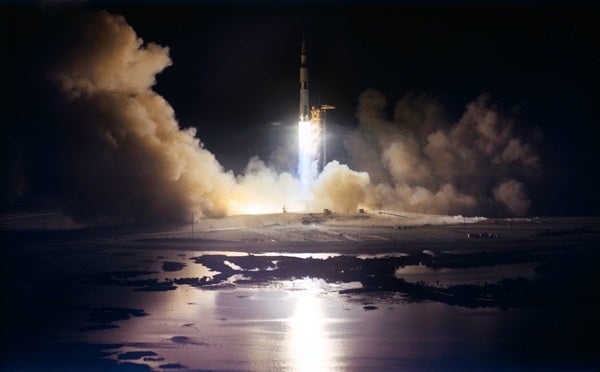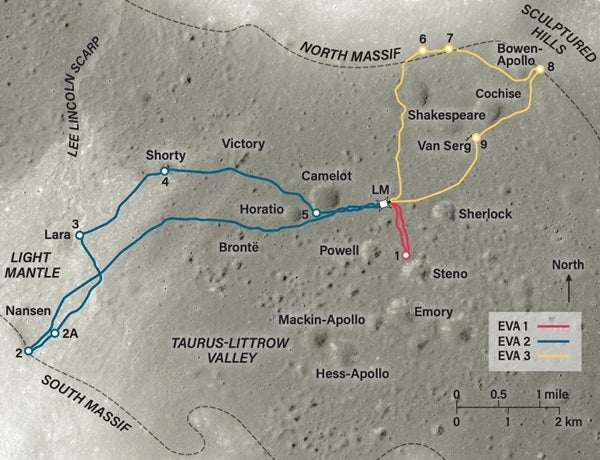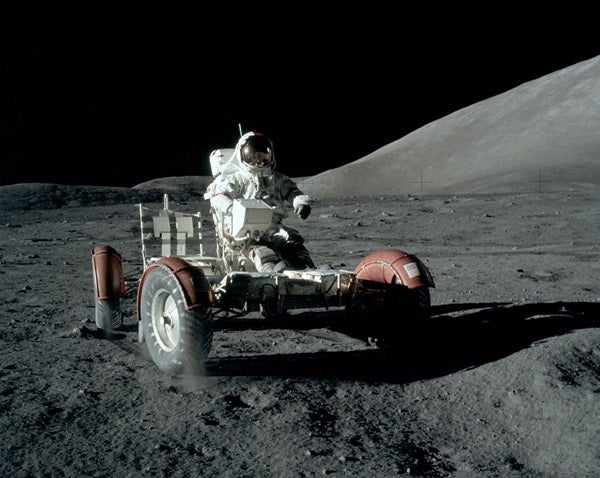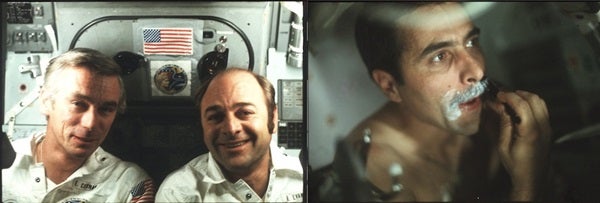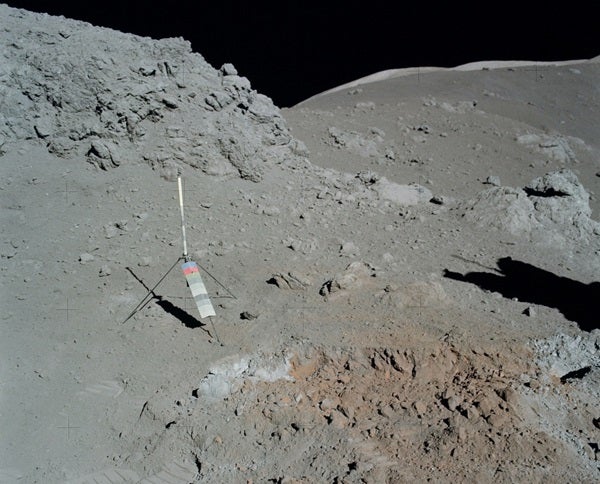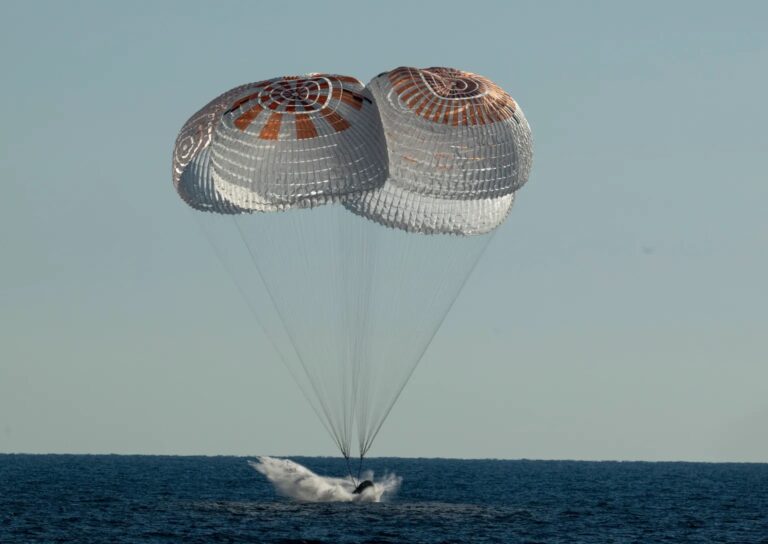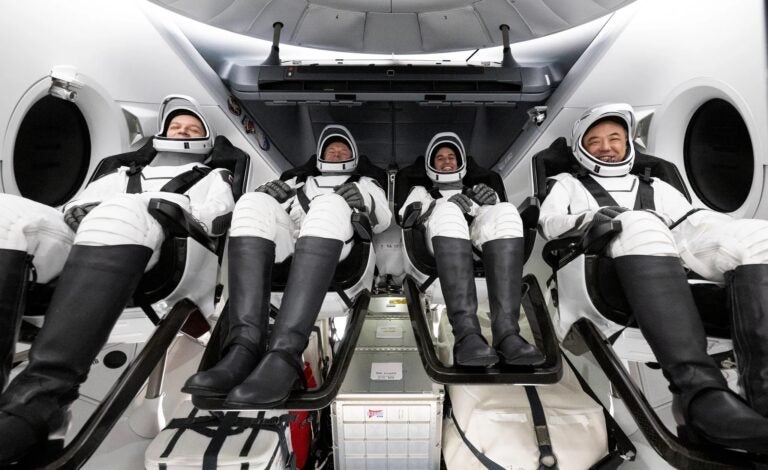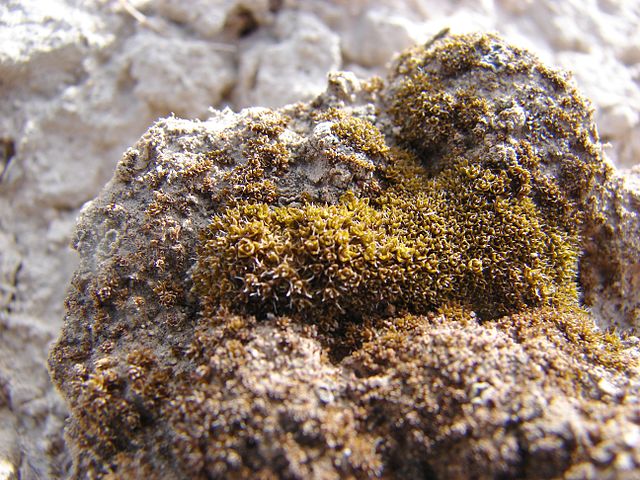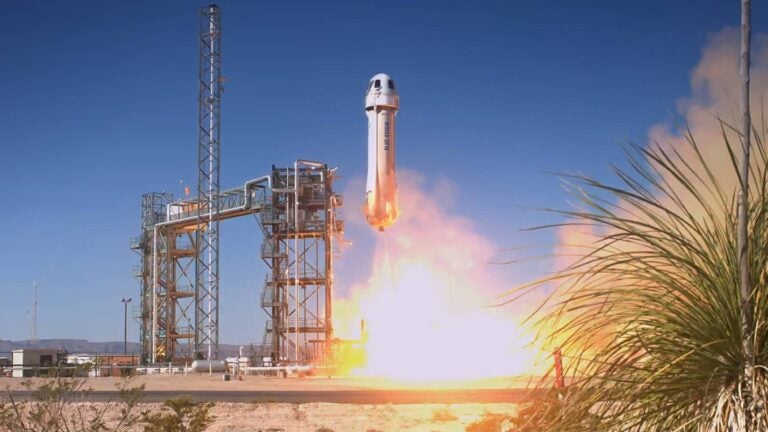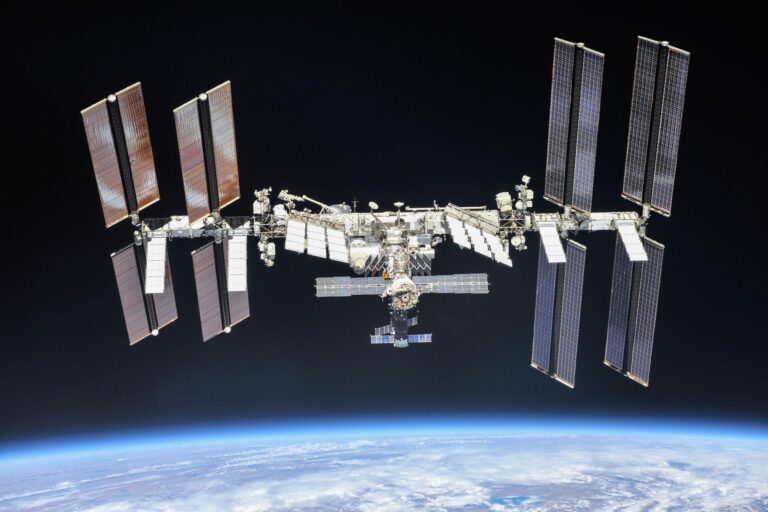By the time Apollo 17 launched at the end of 1972, NASA was already looking ahead. It was planning a first-ever joint mission with the USSR, preparing to launch the Skylab space station, and soliciting proposals from contractors for a new, reusable launch system dubbed the space shuttle, which was already attracting criticism and being called an expensive boondoggle.
But even as public interest waned, Apollo 17 was NASA’s last chance to demonstrate to scientists, politicians, and the taxpaying public that the entire $26-billion Apollo program had been worthwhile. To that end, NASA pulled out all the stops it could afford, especially when it came to science.
The crew’s most prominent member was not its commander, but rather Lunar Module Pilot (LMP) Harrison “Jack” Schmitt. A geologist by training, Schmitt was hailed as the first Apollo “scientist-astronaut” — a novelty in an era when the U.S. astronaut corps had been the exclusive domain of military and test pilots.
His selection was the culmination of a long-running campaign from the scientific community to send a geologist to the Moon. Schmitt had been assigned to the backup crew of Apollo 15, who, per NASA custom, were unofficially in line to fly three missions later. But after Apollo 18 was axed due to budget cuts in September 1970, speculation swirled inside and outside of NASA that Schmitt would be moved up to Apollo 17. Finally, on Aug. 13, 1971, six days after Apollo 15 splashed down, NASA announced Schmitt would be on Apollo 17 — bumping Joe Engle.
Commander Gene Cernan was making his third spaceflight and second trip to the Moon. On Apollo 10, as LMP, he had come tantalizingly close to the lunar surface, descending to a height of just 47,000 feet (14,300 meters) in a dry run for Apollo 11 before throttling up and returning home. Command Module Pilot Ronald Evans rounded out the crew; he and Cernan were former naval aviators.
Schmitt would unleash his expertise in what he called a geologist’s paradise. The landing site was Taurus-Littrow, a valley on the southeastern rim of Mare Serenitatis (Sea of Serenity). It was hemmed in by mountains as high as 7,900 feet (2,400 m), which were heaved upward in the massive impact that formed the Serenitatis basin. Since then, volcanoes and impacts had further sculpted the area. Features included landslides, ejected boulders that had scraped tracks into the lunar soil, and a 260-foot-tall (80 m) scarp — the remains of a fault line — that cut across the 4.4 mile-wide (7 kilometers) valley.
It promised much — and the crew delivered, sending off Apollo with a remarkable swan song.
The final Apollo mission was the first to launch at night — and also the first to suffer a delay on the pad. Just 30 seconds from liftoff, the launch software ordered the proceedings to a halt. It turned out an oxygen tank had not been automatically pressurized — and though technicians manually pressurized it, the program had not gotten get the message. To bypass the checks, the ground crew rewired the launch computers. Two hours and 40 minutes later, Apollo 17 lifted off, witnessed by a crowd of half a million people.
Cernan, the only crew member to have flown to space before, warned his crewmates about the bumpy ride at staging, when the first stage would separate and the second stage would ignite.
Cernan: Inboard [engine] cutoff.
Robert Overmyer, Capsule Communicator (CapCom): Roger, inboard.
Cernan: OK, now hold on after staging, guys. […]
Cernan: Hold on!
(Unknown): OK.
Cernan: Five seconds. Which gs?
(Unknown): Four gs.
The astronauts received a jolt forward — from 4 gs nearly instantly to 0 gs — as the first stage engines cut out.
(Unknown): Stage cu — ooof —
Evans: Jesus Christ!
Cernan: I told you to hold on. Look at that son-of-a-b—-. Man!
Thanks to the nighttime launch, the crew got a spectacular view out the Command Module (CM) windows of the bright yellow fireball from the first stage overtaking and enveloping them. Then, when the second stage lit, they blasted back through the flame.
Evans: Jesus criminy! [High-pitched laughter.] Haha!
Cernan: OK, Bob. I guess we got all five [engines]. […]
Schmitt: By the way, the cabin’s sealed. [Laughter.] […]
Cernan: Let me tell you, this night launch is something to behold. […]
You guys believe me about that S-I staging now?
Evans: [High-pitched laughter.] Haha!
Schmitt: I can’t believe how smooth this is. […]
Cernan: OK, let’s keep this mother burning. We’ve got a long way to go.
The valley of Taurus-Littrow was the Apollo program’s most ambitious landing site. It runs roughly east-west between two massifs to the north and south that are taller than the Grand Canyon is deep. A third massif and a slighter range called the Sculptured Hills sit at the eastern end of the valley; the western end opens into Mare Serenitatis. In the Lunar Module (LM) Challenger, Cernan and Schmitt approached from the east, soaring over the hills and descending between the North and South massifs.
Cernan: OK, I got the South Massif.
Schmitt: OK, update the AGS [Abort Guidance System], Houston?
Cernan: Yes.
Gordon Fullerton (CapCom): That’s affirmative, update the AGS.
Cernan: OK, Gordo, I’ve got Nansen [Crater]; I’ve got Lara [Crater]; and I’ve got the Scarp. Oh, man, we’re level with the top of the massifs, now. […] OK, Gordo, we’re out of 11,000 [feet] at nine [minutes].
Schmitt: OK, stand by for pitchover.
Cernan: Oh, are we coming in. Oh, baby.
Schmitt: OK; through 9,000.
Cernan: Stand by for pitchover, Jack.
Schmitt: Eight thousand.
Cernan: I’ll need the PRO[CEED command entered into the computer].
Schmitt: I’ll give it to you.
Cernan: Pitchover.
Schmitt: There it is! Proceeded.
Cernan: And there it is, Houston. There’s Camelot [Crater]!
Schmitt: Wow!
Cernan: Right on target.
Schmitt: I see it.
Cernan: We got them all.
In classic carrier-landing style, Cernan brought Challenger in hot, at a faster rate of descent than planned — then leveled it out right before touchdown.
Schmitt: Moving forward a little. Ninety feet. Little forward velocity. Eighty feet; going down at 3. Getting a little dust. We’re at 60 feet; going down about 2. Very little dust. Very little dust, 40 feet; going down at 3.
Cernan: Stand by for touchdown.
Schmitt: Stand by. Twenty-five feet; down at 2. Fuel’s good. Twenty feet. Going down at 2. Ten feet. Ten feet. Co — contact!
The LM engine cut off and Challenger freefell the last several feet to the surface.
Schmitt: STOP, push. Engine STOP; Engine ARM; PROCEED; Command Override, OFF; Mode Control, ATT HOLD; PGNS, AUTO.
Cernan: OK, Houston. The Challenger has landed!
Fullerton: Roger, Challenger. That’s super. [Applause in background.]
Schmitt: OK, [cycling thruster] Parker valves.
Cernan: Boy, you bet it is, Gordo. [To Schmitt] Boy, when you said shut down, I shut down and we dropped, didn’t we?
Schmitt: Yes, sir! But we is here!
Cernan: Man, is we here! […]
Cernan: Jack, are we going to have some nice boulders in this area. […]
Schmitt: Ohhh!!! Man, look at that rock out there!
Cernan: Absolutely incredible. Absolutely incredible.
Schmitt: I think I can see the rim of Camelot [Crater].
Fullerton: Roger.
Cernan: Epic moment of my life.
After relaying their initial impressions of the landscape to Houston and taking care of some housekeeping items, the crew went straight into preparation for their first extravehicular activity (EVA). Cernan was first to clamber out.
Cernan: I’m on the footpad. And, Houston, as I step off at the surface at Taurus-Littrow, I’d like to dedicate the first step of Apollo 17 to all those who made it possible. [Pause.] Jack, I’m out here. Oh, my golly. Unbelievable! Unbelievable, but it is bright in the Sun.
The crew didn’t stray far from Challenger on their first EVA. First, they set up the Apollo Lunar Surface Experiments Package (ASLEP), a suite of scientific instruments, near the LM. They also drilled a deep core sample. But difficulties with the core sample meant the day’s planned 90-minute geology field trip to Station 1, roughly 0.6 mile (1 km) to the south, had to be cut short by half an hour, leaving Schmitt none too pleased.
The next day, Cernan and Schmitt set out across the valley in their lunar rover for the South Massif, roughly 5 miles (6 km) away, on the other side of the scarp. Their destination had a dynamic history: A landslide had swept across the lower slopes and the scarp, leaving a fan of lighter material that contrasted with the dark, volcanic deposits on the valley floor. Strewn atop that was talus — a field of even lighter rocks and boulders that had tumbled down the mountain, which provided the opportunity to sample older massif material from higher elevations.
As time wore on, Schmitt began to get annoyed with some of the requests that CapCom Robert Parker was sending up from the Mission Control back room, where a team of geologists huddled, glued to the TV pictures from the rover and strategizing a sampling plan on the fly. In one conversation, Schmitt took passive-aggressive objection with a call to sample further upslope.
Parker: [To Schmitt] OK, and if you’re going up the massif, why don’t we try and get the rake sample up there now — when you finish these rocks.
Cernan: [Already working upslope.] Hey, Jack — Jack, don’t come up here unless you bring the rake. It’s a long trip. No sense coming up here twice.
Schmitt: Well …
Cernan: I can go get this sample. I’d get the rake if I were you. Don’t walk back up twice.
Schmitt: Well, I don’t … uhrm uhrm uhrm … I don’t — I’m not sure they’re going to gain anything by coming up to the top. OK. [Schmitt starts walking uphill back toward the rover.] You’re not going to gain a thing, Bob.
Parker: Standby.
Schmitt: You’re still on the talus. [Pause.] You guys — oh, well. [He drops the subject and continues trudging up the slope.] The rims of the small craters in the talus are — are softer than the normal terrain. My foot goes in maybe 10 centimeters [4 inches] where normally it only goes in a centimeter.
Parker: [Interrupting.] OK. As long as it’s above the break of the slope, Jack, we don’t have to get very far up the slope.
Schmitt: [Annoyed.] That’s right! It’s too late! [He turns to leave the rover and walk further uphill.]
Parker: And, Jack, if you’re back at the rover, how about giving us a grav[imeter] reading before you leave.
Schmitt: Because I’m late sampling! That’s why. But I’ll do it anyway.
Parker: Uh, Roger.
While Cernan attempted to delicately change the topic with details of another boulder, Schmitt wasn’t ready to let the topic go.
Schmitt: Hey, look, Gene, on these rake samples, there’s just no point in carrying a rake all the way up here —
Parker: [Interrupting.] Negative, Jack, as long as you’re above the break —
Schmitt: — because all we needed was a break in the slope.
Parker: — as long as you’re above the break in the slope, that’s right.
Schmitt: Well, that’s all right. It’s being done. But let’s watch those kind of calls, please.
Cernan: [Diplomatically.] Yeah, they can’t appreciate the toughness of going up this slope, though. We can — we’ve got to tell them that.
Schmitt: Well, we did.
Parker: Yeah, that’s what we were saying. Don’t go above just at the base of the break in the slope, Jack. Don’t climb all the way up there with it.
Schmitt: Ah, relax!
Cernan: OK, we’re all set, Bob. No problem.
Station 3 at Lara Crater brought more frustration for Schmitt. Cernan was tasked with drilling a sample core, leaving Schmitt to take surface samples solo — a difficult task for a tired astronaut in a bulky suit. In one slapstick sequence, he managed to knock over the bag of samples, scattering them across the slope. He gathered them back up, only to drop the container again. In trying to pick it up, he fell over, rolling on the ground. He finally retrieved the container, only for his stack of empty bags to fall off their mount atop his camera.
Parker: Hey, Gene, would you help — would you go over and help Twinkletoes, please?
Schmitt: I tell you, you fix that camera bracket so the bags stay on and I’ll be a lot better off.
Parker: Roger.
Cernan: Want some help, Jack? I’ll be there.
Schmitt: No! I don’t need any help.
Cernan: OK.
Schmitt: I just need better bags.
But a couple minutes later, Schmitt offered an olive branch to Parker.
Parker: We’re watching you, Jack.
Schmitt: What’s that?
Parker: I said we’re watching you, but don’t let that inhibit you.
Schmitt: Bob, I don’t let anything inhibit me. And I don’t stay mad very long. [He neatly grabs his sampling scoop by stepping on the head, pivoting the handle up.]
Parker: [Impressed.] That was very good!
But in the end, Parker couldn’t resist one parting quip as they departed Station 3.
Parker: And be advised that the switch board here at MSC [the Manned Spaceflight Center] has been lit up by calls from the Houston Ballet Foundation requesting your services for next season.
Schmitt: I should hope so!
Station 3 was an emotional low point of the mission for Schmitt. But the crew’s next stop — Shorty Crater, 360 feet (110 m) wide and 46 feet (14 m) deep — would give him a shot of adrenaline and the mission’s highest of highs.
Cernan: This is an impressive one. Wait until you see the bottom of it. […]
Parker: OK, and the primary priority — the No. 1 and 2 priorities at this station will be samples from the crater rim and the pan from the crater rim. Over.
As the crew prepared to handle these tasks, Schmitt suddenly saw something curious.
Schmitt: Ohhh, hey!! [Pause. Doubting himself.] Wait a minute —
Cernan: What?
Schmitt: — where are the reflections? I’ve been fooled once. [Discarding his doubts.] THERE IS ORANGE SOIL!
Cernan: [Skeptically.] Well, don’t move it until I see it.
Schmitt: It’s all over! Orange!!!
Cernan: Don’t move it until I see it …
Schmitt: I’ve stirred it up with my feet.
Cernan: … HEY, IT IS! I can see it from here!
Schmitt: It’s orange!
Cernan: Wait a minute, let me put my visor up. It’s still orange!
Schmitt: Sure it is! Crazy!
Cernan: Orange!
Schmitt: I’ve got to dig a trench, Houston.
Parker: Copy that. I guess we’d better work fast.
Schmitt took command of the situation, sizing up the images they would need to obtain and digging a trench for samples. The crew had roughly 30 minutes before mission rules dictated they return to the LM.
Cernan: Hey, he’s not — he’s not going out of his wits. It really is.
Parker: [Half-joking.] Is it the same color as cheese? […]
Schmitt: It’s almost the same color as the LMP decal on my camera.
Parker: OK. Copy that.
Cernan: That is orange, Jack! […]
Schmitt: Fantastic, sports fans. It’s trench time! You can see this in your color television, I’ll bet you.
Cernan: How can there be orange soil on the Moon?! [Pause.] Jack, that is really orange. It’s been oxidized! Tell Ron to get the lunar sounder [in the CM pointed] over here.
Schmitt: It looks just like a — an oxidized desert soil, that’s exactly right.
Schmitt, Cernan, and the geologists immediately realized there was a possibility that they had stumbled upon a young volcanic vent, where escaping steam and gases had rusted the soil. Next, Schmitt readied a core sample.
Schmitt: Did you want that in the orange?
In Mission Control, voices shouted in unison from the geologists’ back room: “Yes!”
Parker: Roger, that’s affirm. We can put cores in gray soil all the time.
After the mission, analysis would show that the orange soil was not oxidized from volcanic venting; rather, it contained glassy beads that had formed from a fiery fountain of molten droplets and were encased in a lava flow some 3.5 billion years ago. Shorty Crater itself was formed by an impact — one that had excavated the beads from below.
As the crew prepared for their rest period, CapCom Joe Allen shared some late-night philosophical musings.
Allen: Might add, also, that there are a lot of us looking forward to that third EVA tomorrow. It’s going to be the last one on the lunar surface for some time.
Cernan: I tell you, if it’s anywhere near what the first two were like, we’re looking forward to it, also. [Long pause.]
Allen: Gene and Jack, we’re still marveling at the beautiful television pictures that we’re getting from your TV camera there. It’s fun, in fact, to watch the tracks that you’re leaving behind in the lunar soil, both footprints and rover tracks. And some of us are down here now reflecting on what sort of mark or track will, someday, disturb the tracks that you leave behind there tomorrow.
Cernan: That’s an interesting thought, Joe, but I think we all know that somewhere, someday, someone will be here to disturb those tracks.
Allen: No doubt about it, Geno.
Schmitt: Don’t be too pessimistic, Joe. I think it’s gonna happen.
* * *
The final lunar EVA of the Apollo program took the pair across the other side of the valley to the North Massif. They drove through the field of boulders strewn across the lower slopes of the massif, made an excursion east to sample the Sculptured Hills, and finished the day surveying the rocky crater Van Serg.
When the crew returned to the LM, they performed a brief closing ceremony in front of the rover’s TV camera. They unveiled a commemorative plaque at the base of Challenger and NASA administrator James Fletcher came on the radio to convey well-wishes from President Richard Nixon.
Then, before climbing up the ladder for the final time, Cernan delivered one last soliloquy on the most distant stage in human history.
Cernan: Bob, this is Gene, and I’m on the surface. And as I take man’s last steps from the surface back home, for some time to come — but, we believe, not too long into the future — I’d like to just [say] what I believe history will record: that America’s challenge of today has forged man’s destiny of tomorrow. And as we leave the Moon and Taurus-Littrow, we leave as we came, and, God willing, as we shall return: with peace and hope for all mankind. Godspeed the crew of Apollo 17.
In a 2007 NASA oral history, Cernan reflected on those final moments on the lunar surface.
Cernan: People kept saying, “What are you going to say, what are going to be the last words on the Moon?” I never even thought about them until I was basically crawling up the ladder. […]
I looked down, and there was my final footsteps on the surface […] I looked over my shoulder because the Earth was on top of the mountains in the southwestern sky. […]
I wasn’t coming back. This was it. I wanted, like in the simulator, I wanted to push the freeze button, stop time, stop the world. I just wanted to sit there and think about this moment for a few moments, and hopefully absorb more subconsciously than I had the ability to take in consciously.
But I couldn’t, there was no freeze button.
So up the ladder I went.


